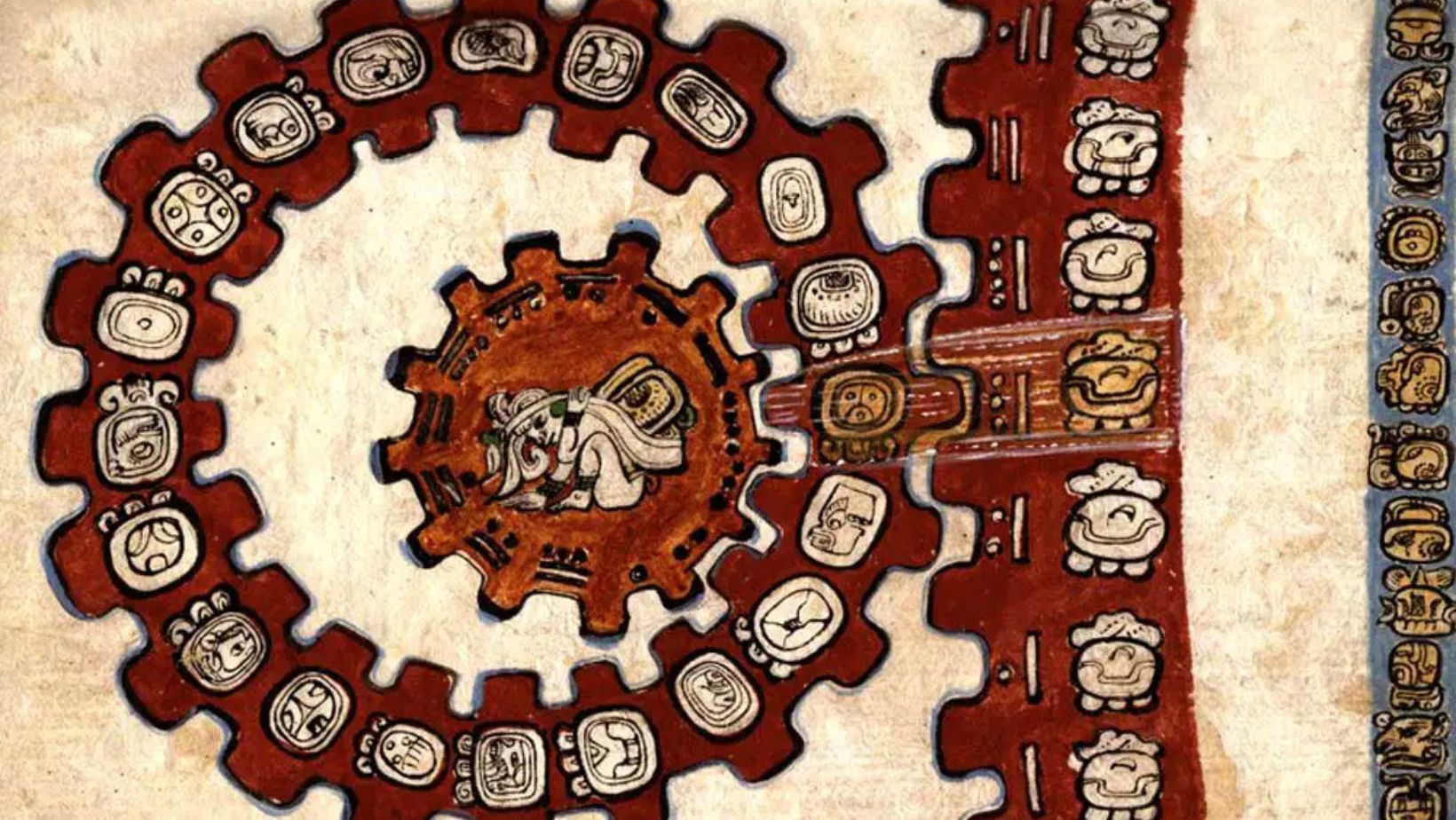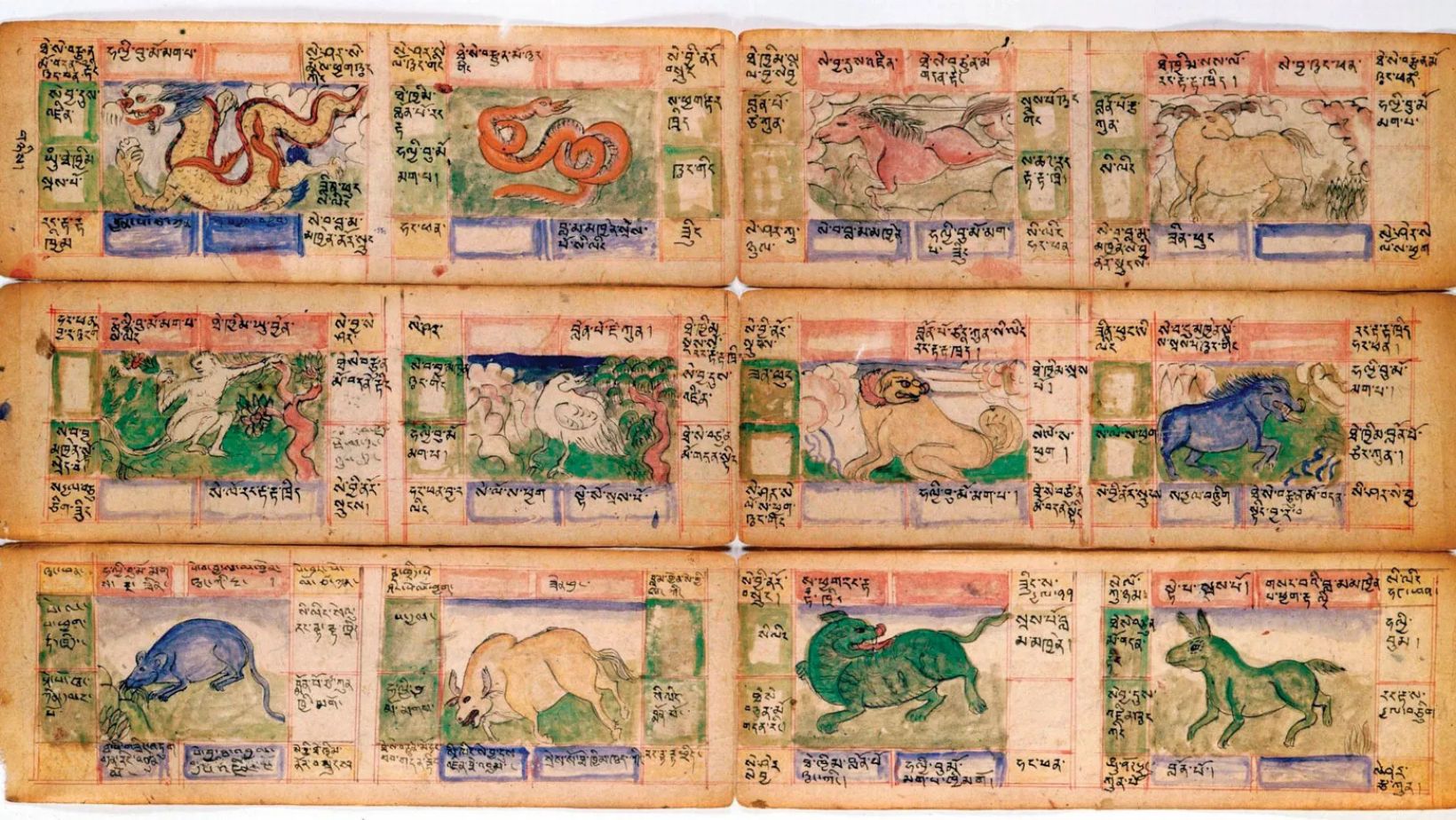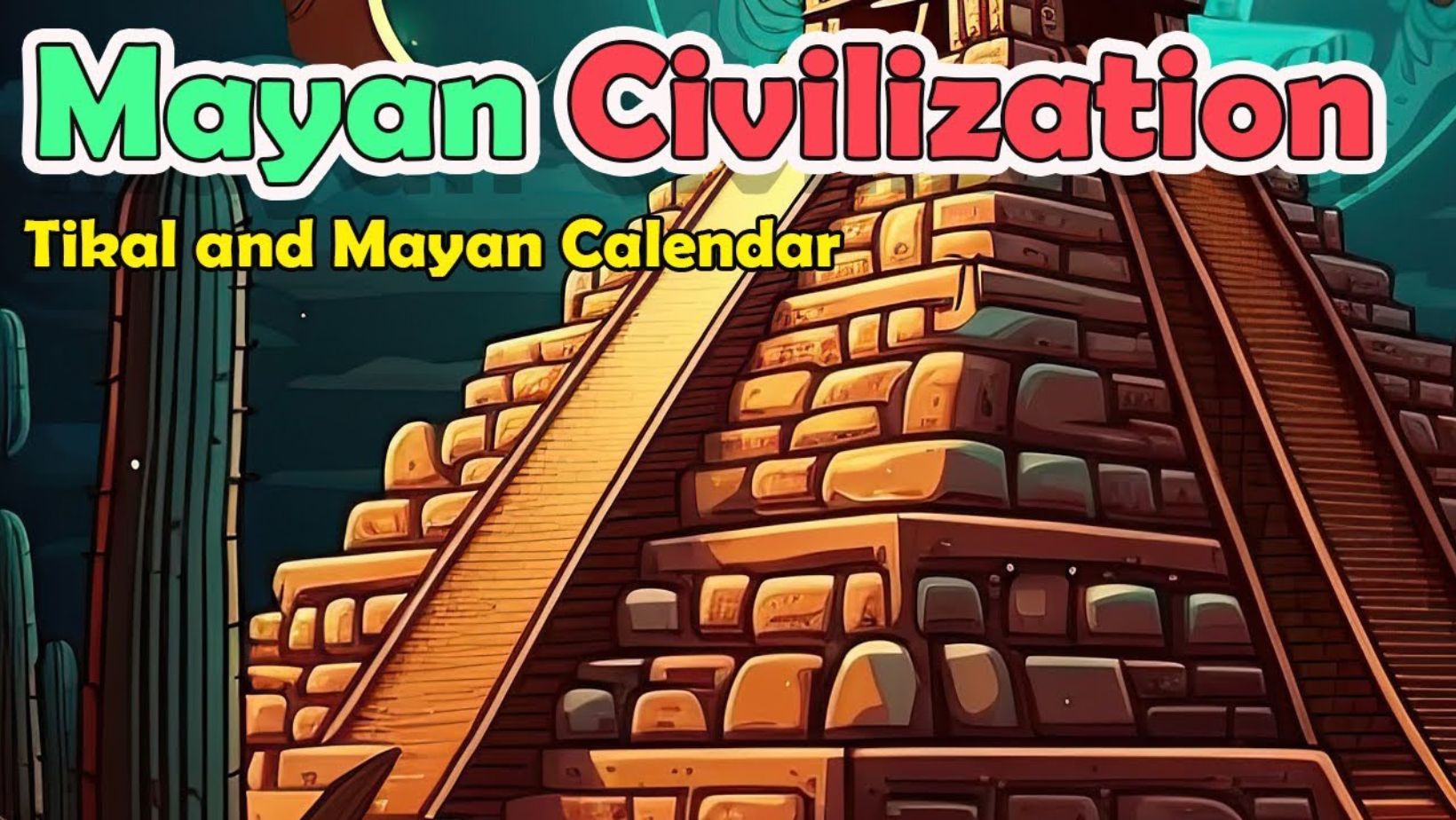Timekeeping was vital in Maya culture. It shaped their daily lives, rituals, and agriculture. The Maya developed a sophisticated system to track time, integrating spirituality with everyday activities. They used two main calendars: the sacred Tzolk’in and the civil Haab’. The Tzolk’in, with its 260 days, governed spiritual events, while the Haab’ tracked the solar year of 365 days. Together, these calendars created a complex framework that guided the Maya in their understanding of the universe. Join us as we explore the fascinating intricacies of The Sacred Calendar and Maya timekeeping and its lasting impact on their civilization.
The Tzolk’in: The Sacred 260-Day Calendar

The Tzolk’in is a unique calendar consisting of 260 days. It combines 20 named days with 13 numbers, creating a cycle that repeats every 260 days. This structure held great significance in Maya culture, deeply intertwined with their religious beliefs. Each day in the Tzolk’in was associated with specific deities and energies, influencing ceremonies and rituals.
The Tzolk’in played a crucial role in religious and ceremonial life. It guided the timing of agricultural activities, such as planting and harvesting. Additionally, it dictated important events like births, marriages, and festivals. Maya priests used the Tzolk’in to determine auspicious dates for rituals, ensuring harmony with the cosmos.
Each day was believed to carry its own energy, impacting individuals and communities. This calendar not only helped organize time but also connected the Maya people to their spiritual world. The Tzolk’in exemplifies the intricate relationship between timekeeping, spirituality, and daily life in the ancient Maya civilization.
The Haab’: The Solar Calendar
The Haab’ is the Maya solar calendar, consisting of 365 days. It has 18 months, each containing 20 days, plus an additional month called Wayeb’, which has just five days. This calendar reflects the solar year and was vital for agricultural planning. It helped the Maya track the seasons and align their farming activities.
Each month in the Haab’ holds specific significance and is associated with particular deities and rituals. For instance, the month of Pop is dedicated to the planting season, while the month of Pax is linked to the harvest. The last month, Wayeb’, is seen as a time of reflection and preparation before the new year begins. During this period, the Maya performed rituals to honor their gods and seek blessings for the upcoming cycle.
The Haab’ calendar was essential for organizing community events and ceremonies. It provided a framework for daily life, linking agriculture, religion, and social activities. By understanding the Haab’, we gain insight into the intricate relationship between the Maya people and their environment.
The Calendar Round: A Unique Time Cycle
The Calendar Round is a unique time cycle used by the Maya, lasting 52 years. It combines the Tzolk’in, a 260-day sacred calendar, and the Haab’, a 365-day solar calendar. Together, these two calendars create a 18,980-day cycle. This means that after 52 years, the same combination of dates in both calendars aligns again.
The interaction between the Tzolk’in and Haab’ is essential for the Calendar Round’s structure. Each Tzolk’in day corresponds to a specific Haab’ month, resulting in distinct day-month combinations. For instance, the first day of the Tzolk’in might align with the first month of the Haab’, but after 52 years, it will match the same day again.
This cyclical nature was vital for scheduling events and ceremonies in Maya society. It helped the Maya track time for agricultural, religious, and social activities. By understanding the Calendar Round, we see how the Maya viewed time as both cyclical and interconnected, reflecting their deep relationship with the cosmos.
Long Count Calendar: Tracking Historical Time
The Long Count Calendar is a vital system used by the Maya for tracking historical time. It is designed to record significant events, often spanning thousands of years. Unlike the cyclical nature of the Tzolk’in and Haab’, the Long Count uses a linear approach, counting days from a specific starting point known as the “creation date,” which corresponds to August 11, 3114 BCE.
This calendar is essential for recording historical events, including the reigns of rulers and significant cultural milestones. Each date in the Long Count is expressed in a format of five numbers, representing various units of time: baktun, katun, tun, uinal, and k’in. For example, a date like 12.0.0.0.0 refers to 12 baktuns, which is approximately 1,872,000 days. The Sacred Calendar
The Long Count also plays a significant role in understanding Maya lineage and history. It allows historians and archaeologists to pinpoint when certain events occurred, helping to connect archaeological finds to historical narratives. Through this system, the Maya not only documented their past but also maintained a sense of cultural identity and continuity.
Rituals and Ceremonies Associated with the Calendar: The Sacred Calendar

The Tzolk’in and Haab’ calendars are central to the Maya’s spiritual and ceremonial life. The Tzolk’in, with its 260-day cycle, is often associated with agricultural and fertility rituals. Important ceremonies are conducted during specific days, invoking blessings for planting and harvesting. For instance, the start of the Tzolk’in marks a time for purification and renewal. The Sacred Calendar
The Haab’, on the other hand, is aligned with solar events, including the annual agricultural cycle. Key rituals coincide with the months of the Haab’, such as the festival of Pop in the month of the same name, celebrating the new year. This festival often involves feasting, dancing, and offerings to deities to ensure a bountiful harvest.
Calendar events are crucial in Maya spirituality, as they connect the community with the cosmos. The Maya believed that time was cyclical, and each period held its own significance and energy. By participating in these rituals, they sought harmony with the universe and the gods. Thus, the calendars serve not only as timekeeping tools but also as vital links to their beliefs and cultural practices.
Astrological Influences on Maya Calendars: The Sacred Calendar
Celestial events played a significant role in shaping the Maya calendars. The Maya were keen observers of the sky and tracked the movements of the sun, moon, and planets. These observations directly influenced the Tzolk’in and Haab’ cycles. For example, the Tzolk’in was often aligned with the cycles of Venus, particularly in relation to warfare and agriculture.
The Maya associated specific celestial phenomena with particular days in their calendars. Eclipses, for instance, were seen as powerful omens that required rituals to appease the gods. Similarly, the positions of the planets were believed to affect human affairs, including health, harvests, and conflicts.
Astronomy was crucial for agricultural planning as well. The Maya used their calendars to determine the best times for planting and harvesting crops. By understanding the relationship between celestial events and their calendar systems, the Maya were able to maintain harmony between their society and the cosmos. This deep connection to astronomy demonstrates the sophistication of Maya timekeeping and its integral role in their culture.
Maya Calendar and Agriculture: The Sacred Calendar
The Maya calendar was essential for guiding agricultural practices. It dictated when to plant and harvest crops, ensuring a successful yield. The two main calendars, the Tzolk’in and the Haab’, played a crucial role in this process. Farmers used these cycles to time their activities with the changing seasons.
The Tzolk’in, a 260-day calendar, was primarily linked to the planting of crops. It helped determine the optimal days for sowing seeds and performing rituals to honor the gods. The Haab’, a 365-day solar calendar, marked the seasonal cycles. This calendar indicated the best times for harvesting crops like maize, beans, and squash.
Planting and harvesting seasons were significant for the Maya. Successful agricultural cycles ensured food security for their communities. Additionally, these seasons were intertwined with religious rituals, as the Maya believed that their harvests depended on pleasing the gods. By following the calendar closely, the Maya maintained a sustainable agricultural system that supported their civilization for centuries.
Modern Interpretations and Misunderstandings: The Sacred Calendar
Misconceptions about the Maya calendar abound in modern culture. One common myth is that the Maya predicted the world would end in December 2012, based on their calendar. In reality, this date marked the completion of a significant cycle, not an apocalypse. This misunderstanding stems from a lack of knowledge about the complexities of Maya timekeeping. The Sacred Calendar
Current interpretations of the Maya calendar vary among scholars. Many emphasize its spiritual and agricultural significance rather than apocalyptic predictions. These interpretations highlight the calendar’s role in guiding daily life, rituals, and agricultural practices. The Maya calendar is seen as a sophisticated system that reflects their deep connection to nature and the cosmos.
Additionally, popular media often oversimplifies the calendar’s structure. This oversimplification can lead to a distorted view of Maya culture. By recognizing the calendar’s true significance, we can appreciate the Maya’s advanced understanding of time and its relationship to their society. Accurate interpretations can foster greater respect for the Maya civilization and its lasting legacy.
Preservation of the Maya Calendar Tradition Today: The Sacred Calendar

Efforts to preserve the Maya calendar tradition are ongoing in various communities. Many organizations and cultural institutions work to document and promote this ancient knowledge. Workshops and educational programs are organized to teach younger generations about the significance of the calendar. This helps ensure that the traditions are not lost to time. The Sacred Calendar
Modern Maya communities play a crucial role in keeping these traditions alive. Elders often share their wisdom, passing down the calendar’s teachings orally. Festivals and rituals still take place, integrating the calendar into everyday life. These events highlight the calendar’s importance in agricultural cycles, ceremonies, and community gatherings.
Additionally, academic institutions collaborate with Maya leaders to study and share their calendar practices. This partnership fosters mutual respect and understanding. It also allows for a blend of ancient wisdom with contemporary needs. The ongoing efforts to preserve the Maya calendar tradition demonstrate a strong commitment to cultural heritage and identity. The Sacred Calendar
Through these initiatives, the Maya calendar continues to be a living tradition. It reflects the resilience of the Maya people and their connection to their rich history. The preservation of this knowledge not only honors the past but also enriches the future.
Conclusion: The Sacred Calendar
The Maya calendar system is a remarkable achievement that reflects the civilization’s deep connection to time and the cosmos. Its complexity showcases the Maya’s advanced understanding of astronomy and their integration of timekeeping into religious and agricultural practices. Understanding this ancient system offers valuable insights into how societies perceive and measure time. In contemporary culture, exploring the Maya calendar enriches our appreciation for diverse historical perspectives on time and highlights the significance of preserving such knowledge. The enduring legacy of Maya timekeeping continues to inspire curiosity and respect for ancient wisdom in today’s world.
FAQs
How did the Maya calendar influence their daily life?
The Maya calendar significantly influenced daily activities, dictating everything from agricultural practices to social events. The Tzolk’in guided rituals and ceremonies, while the Haab’ governed the agricultural cycle. This synchronization helped communities plan their lives around seasonal changes and religious observances.
What materials did the Maya use to create their calendars?
The Maya typically used materials like bark paper, stone, and ceramics to create their calendar inscriptions. Codices, made from tree bark, contained detailed records of the Tzolk’in and Haab’ calendars. Stone monuments often displayed important dates and events in the Long Count system.
How do the Maya calendars compare to modern calendars?
The Maya calendars are more complex than the Gregorian calendar, as they consist of multiple interlocking systems. While modern calendars focus primarily on solar cycles, the Maya incorporated lunar cycles and astrological events. Their calendars served both practical and spiritual purposes, reflecting a holistic view of time.
What role did scribes play in the Maya calendar system?
Scribes were essential in recording and interpreting the Maya calendar. They meticulously documented rituals, events, and astronomical phenomena in codices and inscriptions. Their work helped preserve the calendar’s significance across generations and ensured that rituals aligned with the appropriate dates.
Are there modern communities still practicing the Maya calendar?
Yes, many contemporary Maya communities continue to observe their traditional calendars. These practices include agricultural cycles, rituals, and ceremonies that reflect their cultural heritage. Efforts are underway to preserve and revitalize these traditions, connecting past and present in meaningful ways.
